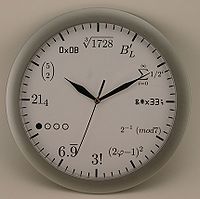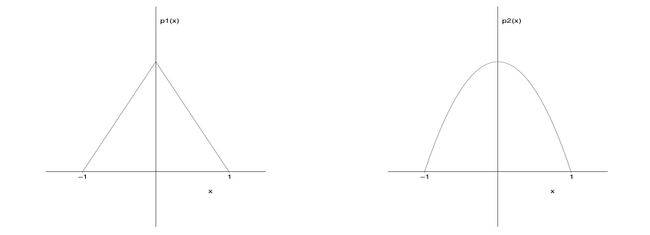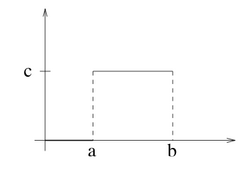Course:MATH103/Archive/2010-2011/207/Lectures/Lecture18
| Faculty of Science Department of Mathematics | |
|---|---|

| |
| Course Pages | |
| Course Policies | |
| Math Solvers | |
| Exams | |
| Quizzes | |
| Assignments | |
| Lectures | |
Lecture 18
Readings For This Lecture
- Chapter 8, pages 157 to 161 (up to subsection 8.4)
Summary
Group 12: Add a summary of the lecture in this space. Include examples, discussion, and links to external sources, if desired.
Exercises
1. Consider a function defined on some interval . The median of is defined to be the value of the independent variable, , say , which splits the area under between and into two equal portions, i.e. such that
.
Use this definition to find the median of .
| Solution |
|---|
Using the definition of the median as above, equate these two integrals, and solve using the quadratic equation.
|
2. Under the same setup as question 1, find the median of .
3. The figure below shows the result of an experiment with three groups of people. In each group, every person was asked to throw a ball. The distance was recorded. The probability of throwing a given distance is shown for each of the groups . Compare the average (mean) distance thrown in the three groups. Compare the median distances thrown in the three cases.
4. Consider the two probability density functions and on the interval . Find the value for the constant in each case so that the probability distribution is normalized (i.e. the total probability is 1). Find the average value (mean) for both of these functions. Find the median for each distribution.
5. Consider the uniform probability distribution . Find the value of the constant . Compute the mean and the median of the distribution.
Solution:
C = 1/(b-a)
Because the distribution is symmetrical, the mean and the median are (a+b)/2.

![{\displaystyle [a,b]}](https://wiki.ubc.ca/api/rest_v1/media/math/render/svg/9c4b788fc5c637e26ee98b45f89a5c08c85f7935)

















![{\displaystyle [-1,1]}](https://wiki.ubc.ca/api/rest_v1/media/math/render/svg/51e3b7f14a6f70e614728c583409a0b9a8b9de01)




